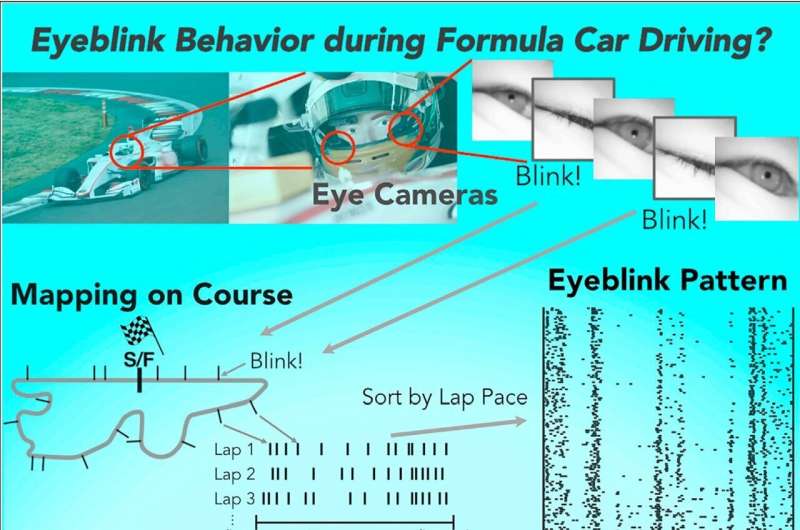May 23, 2023 report
This article has been reviewed according to Science X's editorial process and policies. Editors have highlighted the following attributes while ensuring the content's credibility:
fact-checked
peer-reviewed publication
trusted source
proofread
Racecar drivers found to blink during safest parts of track

A trio of physiologists at NTT Communication Science Laboratories, in Japan, has found that Formula 1 racecar drivers unintentionally time their blinking with straighter parts of the track. In their study, reported in iScience, Ryota Nishizono, Naoki Saijo and Makio Kashino fitted sensors to the helmets of three professional Formula 1 racecar drivers to monitor blinking.
Prior research has found that while it is possible to blink at will, for the most part, it is an unconscious behavior. Prior research has also found that the purpose of blinking is to clear away material on the surface of the eye and to keep the sclera and cornea moist.
Other research has also shown that a secondary type of blinking occurs during unexpected events, such as in response to an oncoming projectile—and some research indicates a link between blinking and concentration. In this new effort, the researchers looked into a possible example of this third type of blinking.
To learn more about the blinking habits of racecar drivers, the researchers recruited three professional Formula 1 racecar drivers. Each had sensors affixed to their helmet that were able to detect blinking. Each of the drivers then drove at race speeds around a professional racecourse.
The researchers found a pattern—all three drivers tended to blink during safer parts of the course. Conversely, all three withheld blinking during critical parts of the course, such as when navigating turns or attempting to overtake a competitor.
The researchers note that blinking while driving a racecar could lead to problems during critical moments, noting that blinking while driving (which lasts for just a fifth of a second) could mean driving in the dark for approximately 20 meters if driving at 354 km/h.
The findings highlight the fact that blinking is part of the visual system and that it is very clearly done in a way that provides protection for the eyes while also providing protection for the body as a whole.
More information: Ryota Nishizono et al, Highly reproducible eyeblink timing during formula car driving, iScience (2023). DOI: 10.1016/j.isci.2023.106803
Journal information: iScience
© 2023 Science X Network





















